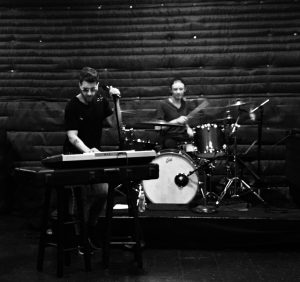Onstage Success - Tom Jacksons Live Music Method
Onstage with Live Music Producer Tom Jackson
free constant contact sign up
Can I Brag?
My Associate Producer Amy Wolter doesn't know I'm sending this out but she … [Read More...]
You Can Go from Good to Great!
One of the "7 Deadly Sins of an Artist" I talk about is "being good." … [Read More...]
Unleashing Your Lead Player (Help, I’m Strapped Part II)
In my previous blog geared toward guitar players, I wrote about what you … [Read More...]
Featured
Fiddling Around – 5 Things Violin Players Can Do to Tune Up Their Performance
Since most violin players are – as far as I know - classically trained, it … [Read More...]
Three Things Keyboard Players Can Do
As you know, the visual aspects of a performance are important, and we work … [Read More...]
How Soon Should You Work on Your Show?
I've gotten both kinds of calls — the kind where I'm asked to help an … [Read More...]
Green Room Comments
Amy Wolter on 4 Steps to a Unique Show
Glad you found us Herby! Yes, people come to shows NOT just...herby on 4 Steps to a Unique Show
My band and I are preparing a number of summer (festival) gigs...Amy Wolter on Three Things Keyboard Players Can Do
Glad to hear this Vee. Yes, it’s a process and takes some...
Tom Jackson Live Schedule
No shows booked at the moment.
Contact Us · Copyright © 2025 Tom Jackson Productions · All Rights Reserved · Log in

 We all know by this time in our lives, the importance of doing things in the right order…whether we DO that or not is another issue! Skipping a step or jumping ahead while baking a cake or putting together a piece of furniture will have a sad outcome, and won’t end up looking like the picture, or tasting like it should.
We all know by this time in our lives, the importance of doing things in the right order…whether we DO that or not is another issue! Skipping a step or jumping ahead while baking a cake or putting together a piece of furniture will have a sad outcome, and won’t end up looking like the picture, or tasting like it should.

As always, wonderful information Amy (either for the beginner or the old war horse that needs an “Oh yeah – that!” moment.
There was a lovely solo artist opening for us last weekend who could sing your socks off, but the entire time she was on stage I just wanted to give her your info (or suggest Tom’s book) so she could see the importance of moving her feet and working the mic! (Yes, I did after her set was over).
Thank you for all you do to teach performers and inspire them. I’ll miss seeing you at The Objective this year (other commitments will be keeping us from attending).
Ha! Yep, it’s hard NOT to notice those details now that you know this stuff. Thanks for giving her a ‘heads up’ 😀
Will miss you at the Objective this week!
Thanks, Amy! Good reminder about song order and creating moments. I always have struggled with set song order. I play in an 80’s cover band called Bubbalove in Vancouver, Canada
Question: We are playing a “Celebration of Life” for our friend’s Mom. Where in the set would you put “Happy Birthday” (trad.) and Birthday – “Beatles”? Somewhere in the middle of the set? At the end?
Thank you
You’re welcome Tim! By ‘Celebration of life’ I assume your friend’s mom has passed on?
If that’s the case, it could be a ‘touching moment'(#7 or 8 in your 45 min set) – that is if you talk about who she was, tell a story about her and possibly
show some photos…then go into traditional Happy birthday song and ask the audience to sing with you. Back it up with either a band arrangement or at minimum a piano or acoustic guitar instead of acapella. If done right, there won’t be a dry eye in the house! THEN to bring everyone up after tears and applause, kick into Beatles b-day song and encourage everyone to celebrate her by dancing their hearts out! I love that song and you may want to extend it if everyone is into it. Make sense?